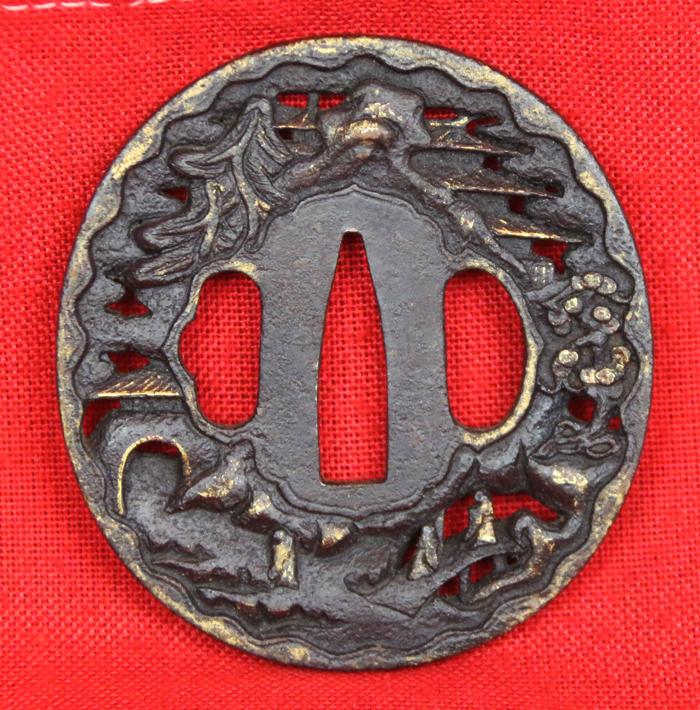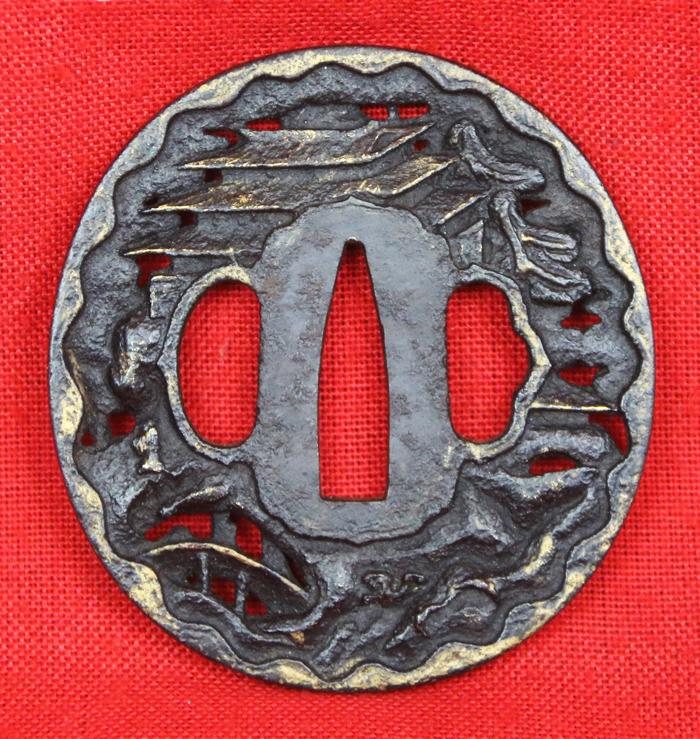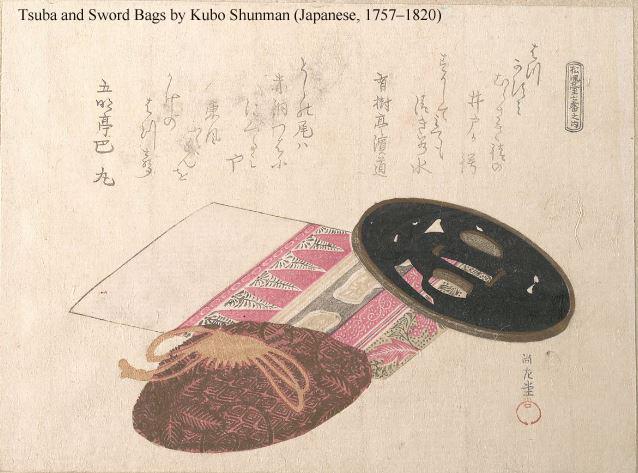A Stunning and Fine Edo Period Antique Nanban Iron and Gold Sukashi Tsuba with Pagoda Scene
Superb Nanban tsuba in Iron and gold highlights Landscape scene of a pagoda, bridge, prunus tree and river.
Nanban often regarded as meaning Southern Barbarian, are very much of the Chinese influence. The Chinese influence on this group of tsuba was of more import than the Western one, however, and resulted not merely in the utilisation of fresh images by the existing schools, but also in the introduction of a
completely fresh style of metalworking.
The term 'namban' was also used by the Japanese to describe an iron of foreign origin.
Neither can the Namban group be considered to represent 'native Japanese art'.
The required presence in the group, by definition, of 'foreign influence', together with the possibility of their being 'foreign made', was probably responsible for their great popularity at the time.
Tsuba are usually finely decorated, and are highly desirable collectors' items in their own right. Tsuba were made by whole dynasties of craftsmen whose only craft was making tsuba. They were usually lavishly decorated. In addition to being collectors items, they were often used as heirlooms, passed from one generation to the next. Japanese families with samurai roots sometimes have their family crest (mon) crafted onto a tsuba. Tsuba can be found in a variety of metals and alloys, including iron, steel, brass, copper and shakudo. In a duel, two participants may lock their katana together at the point of the tsuba and push, trying to gain a better position from which to strike the other down.
68mm x 72mm
Code: 24078
495.00 GBP



